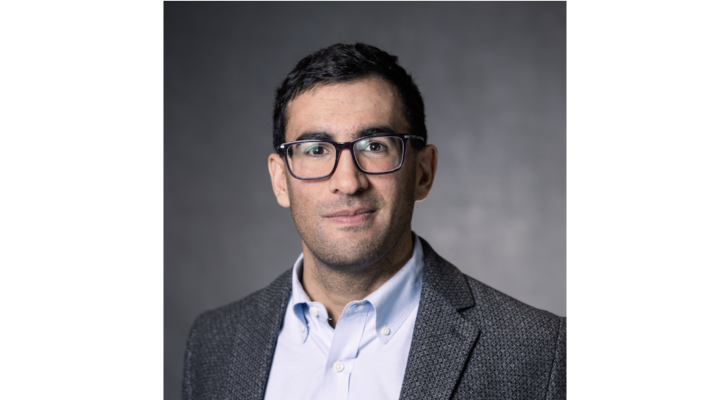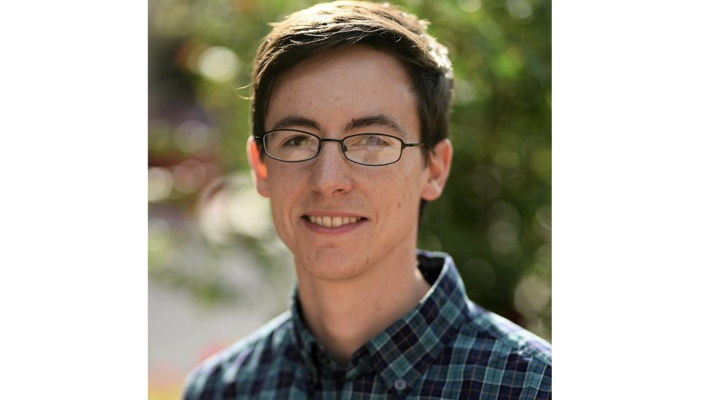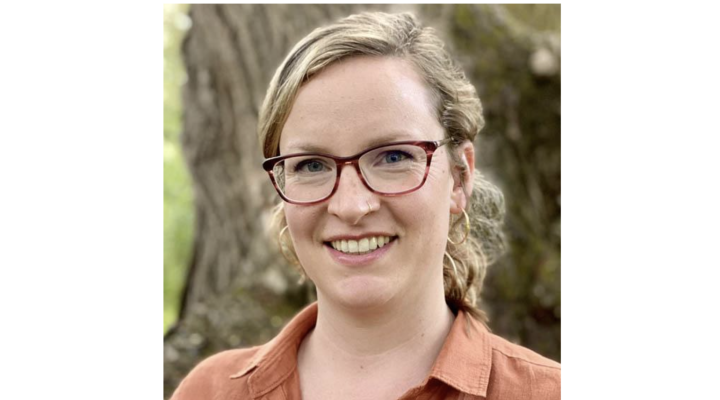It’s been a long time since the iron curtain fell, but Lena Kourkoutis still remembers that moment when she and her family were allowed to cross over from East Berlin to the other side. A ten-year-old at the time, Kourkoutis mostly recalls the grandmotherly woman who gave her and her twin sister apples as welcoming gifts. Now, Kourkoutis is half a world away, breaking her own barriers in the field of electron microscopy at Cornell’s School of Applied and Engineering Physics, free to collaborate with whomever she wishes. Still, she appreciates her childhood. “I was fortunate to live at a time where I didn’t really know what I was missing, and I was brought up in a very social way--you learn to share much more than in a capitalist system,” she said. “When the wall fell I was young enough to take advantage of both systems.”
Now, she’s fully immersed in the West—having first earned a degree in physics at the University of Rostock in Germany, she then traveled to North Carolina State University for a year-long research project “I quickly got hooked on the American system. I just like the way of life here.” Kourkoutis also became hooked on Cornell--she received her Ph.D. at Cornell where she studied interfaces between complex oxides using electron microscopy. She was particularly interested in the superconductivity that takes place at the atomic scale between two non-conductive oxides. As a graduate student, Kourkoutis studied this phenomenon at room temperature; now as a faculty member, she’d like to literally cool things down, since superconductivity is unstable at room temperature. Ideally, she would like to examine interfaces in their ‘natural’ state, which is far below room temperature.
To do this, Kourkoutis needs a better microscope--a cryo-electron microscope to be precise, which allows atomic resolution imaging at very low temperatures. Kourkoutis is working actively to develop a device with her specifications, and once it’s built, there are a number of applications she will tackle, including studying dendrite formation at the interface of electrodes and electrolytes in a battery (which contribute to the battery’s eventual failure). “Why do these structures form, and how do we prevent it?” Kourkoutis asks. With current microscope technologies, there’s no way to get an atomic-level view of the liquid-solid interface between the electrode and electrolyte. “It is difficult to get liquids into the microscope, because the sample sits inside a vacuum,” said Kourkoutis. “No one has been able to get an image of the interface between liquids and solids at atomic resolutions.”
No one in the physical sciences, that is. It dawned on Kourkoutis that biologists had tackled this issue. To study cells, which are mostly water, biologists quickly freeze them, which allows them to look at the cells in the microscope. Kourkoutis wants to borrow this technique and use it for the physical sciences, while delving into the life sciences too. Using cryo-electron microscopes, she would like to study cell structure and function by cross-cutting into frozen cells to better study their inner workings (a whole cell is too big for an electron microscope to peer into fully). Typically, scientists study cells by extracting key proteins or other compounds—“we want to look at the native structure, how does a protein or macromolecule sit inside the cell,” said Kourkoutis. “Right now we’re just getting started and are doing proof of concept work.”
Kourkoutis has gotten some inside help on this research--her twin sister, Sylvia Fitting, is a biologist at Virginia Commonwealth University, studying the effect of an HIV protein on neurons, and sends Kourkoutis snap-frozen neurons for her to use in her cryo-electron microscope research. Aside from the practical help, Kourkoutis appreciates having someone close to confer with. “For me, as a physicist going into biology, I wanted someone I could ask really basic questions,” said Kourkoutis. “Biology is so complex and there’s so much we don’t understand.” Kourkoutis hopes that her efforts towards developing better tools will improve that understanding. “Microscopy is a tool to expand our understanding of the processes around us. Pushing that tool to its limits will allow me to answer unanswered questions in any field that I choose to tackle.”




